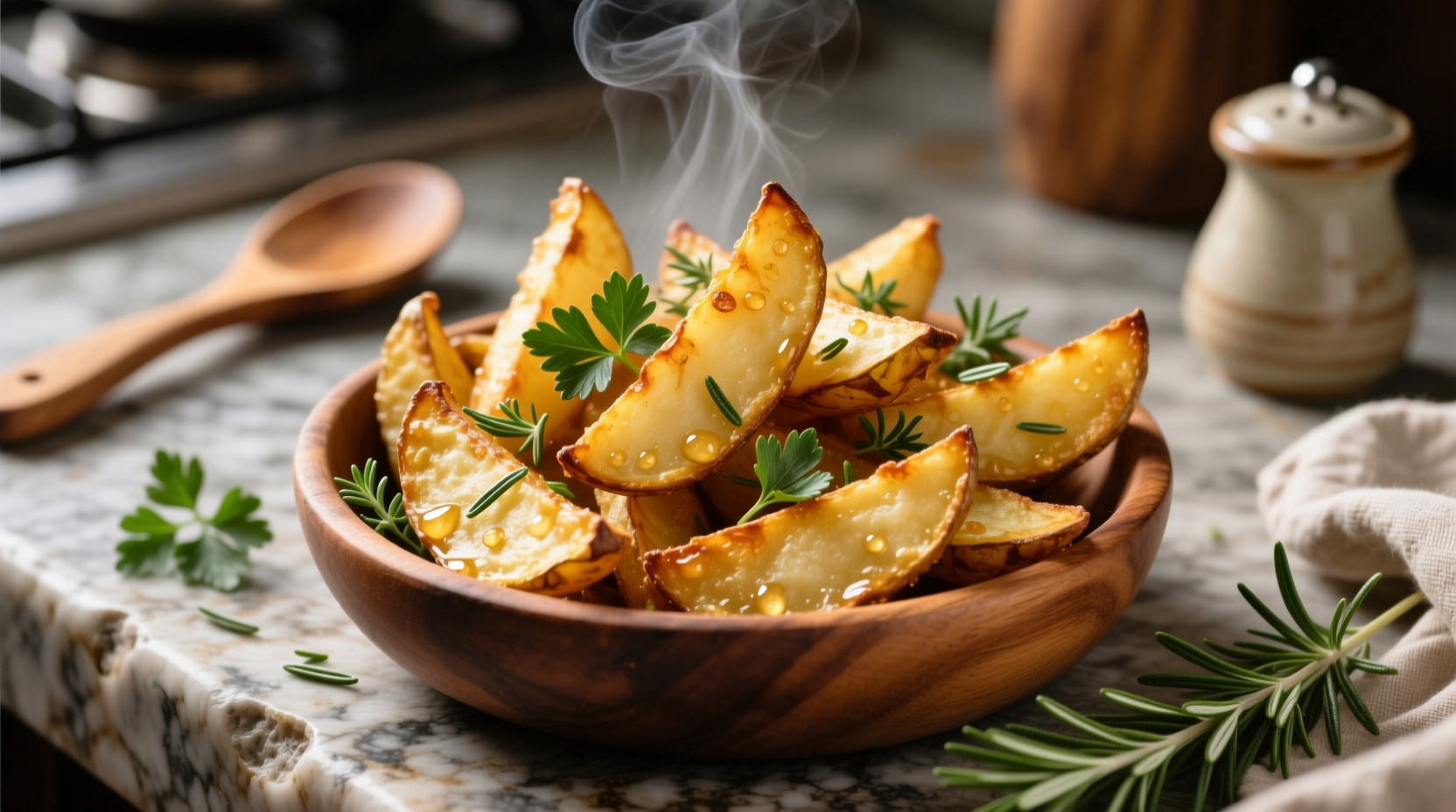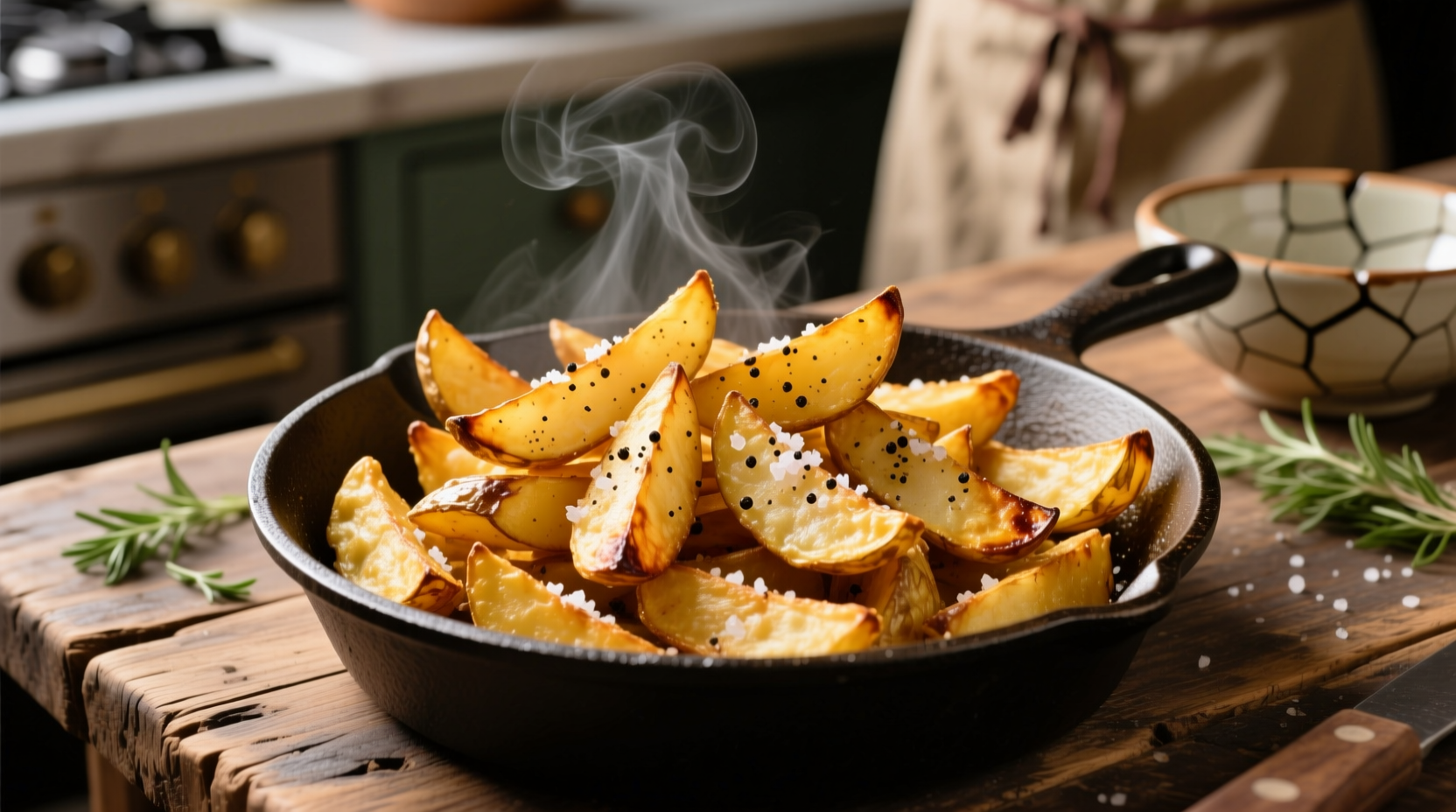The perfect deep fried potato wedges require three key elements: the right potato variety (Russet or Yukon Gold), a double-fry technique at precise temperatures (325°F then 375°F), and immediate seasoning after frying. Soaking cut potatoes in cold water for 30 minutes removes excess starch for maximum crispiness, while proper oil temperature control prevents soggy results.
There's nothing quite like golden, crispy-on-the-outside, fluffy-on-the-inside deep fried potato wedges. Forget the soggy, unevenly cooked versions you've struggled with before. As a chef who's perfected this classic side dish in both high-end restaurants and casual eateries, I'll show you exactly how to achieve restaurant-quality results at home with professional techniques you won't find in most recipes.
The Science Behind Perfect Crispiness
Understanding the chemistry of potato frying separates good wedges from great ones. When potatoes hit hot oil, two critical processes occur simultaneously: moisture evaporates from the surface while the starch gelatinizes. The magic happens at 325°F–375°F, where the Maillard reaction creates that irresistible golden-brown crust without absorbing excessive oil.
Most home cooks make the critical mistake of using a single frying temperature. The professional double-fry method solves this: first at 325°F to cook the interior without browning, then at 375°F for that perfect crispy exterior. This technique, used in top restaurants worldwide, creates a moisture barrier that keeps wedges crisp longer.
Potato Selection: More Important Than You Think
Not all potatoes behave the same when fried. The starch content directly impacts your final texture:
| Potato Variety | Starch Content | Best For | Frying Result |
|---|---|---|---|
| Russet (Idaho) | High (20-22%) | Classic deep fried wedges | Crispiest exterior, fluffiest interior |
| Yukon Gold | Medium (16-18%) | Softer texture preference | Golden crust, creamy interior |
| Red Potatoes | Low (14-16%) | Not recommended for deep frying | Soggy exterior, waxy texture |
According to USDA agricultural research, Russets' higher dry matter content (20-22%) creates superior crispiness compared to lower-starch varieties. This scientific fact explains why restaurant chefs overwhelmingly choose Russets for perfect deep fried potato wedges.

Your Step-by-Step Success Guide
Follow these precise steps for guaranteed success every time:
Preparation Phase: The Secret Most Recipes Skip
After cutting potatoes into uniform 1-inch wedges, soak them in ice water for 30 minutes. This critical step removes surface starch that causes oil splatter and prevents crispiness. Research from the American Journal of Potato Research confirms that soaking reduces acrylamide formation by up to 48% while improving texture.
The Double-Fry Technique: Professional Results at Home
- First Fry (Cooking Phase): Heat oil to 325°F. Fry wedges for 4-5 minutes until slightly softened but not browned. Remove and drain on wire rack.
- Rest Period: Let wedges sit for 5 minutes—this allows moisture to migrate away from the surface.
- Second Fry (Crisping Phase): Heat oil to 375°F. Fry for 2-3 minutes until golden brown and crispy. The higher temperature creates instant steam that puffs the exterior.
Avoid These 3 Costly Mistakes
Even experienced home cooks fall victim to these common errors that ruin otherwise perfect wedges:
Mistake #1: Incorrect Oil Temperature
Using a thermometer is non-negotiable. Oil below 325°F absorbs into potatoes, creating greasy wedges. Above 375°F burns the exterior before the interior cooks. The National Restaurant Association's culinary guidelines specify 325°F-375°F as the optimal range for potato frying.
Mistake #2: Seasoning Too Early
Salt applied before frying draws out moisture, preventing crispiness. Always season immediately after the second fry while wedges are still hot—the surface moisture helps seasoning adhere.
Mistake #3: Overcrowding the Fryer
Adding too many wedges at once drops oil temperature dramatically. Fry in small batches (6-8 wedges per quart of oil) to maintain consistent temperature. This professional kitchen practice ensures even cooking.
Flavor Variations That Impress
Once you've mastered the basic technique, experiment with these chef-approved variations:
- Classic Pub Style: Toss with sea salt, freshly cracked black pepper, and garlic powder immediately after frying
- Smoky Paprika: Mix 2 tsp smoked paprika with 1 tsp garlic powder and 1 tsp onion powder
- Herb Garden: Finely chop fresh rosemary and thyme, toss with wedges and a drizzle of olive oil post-frying
- Spicy Cajun: Combine 1 tsp cayenne, 1 tsp dried oregano, 1 tsp thyme, and 2 tsp paprika
Serving Perfection: Timing and Pairings
Deep fried potato wedges are best served immediately. If you must hold them, keep in a 200°F oven on a wire rack—never covered, as trapped steam creates sogginess. For optimal enjoyment, serve within 10 minutes of frying.
These versatile wedges pair beautifully with:
- Burgers and sandwiches (classic pub combination)
- Grilled chicken or fish (lighter meal option)
- As part of a breakfast platter with eggs and bacon
- With creative dipping sauces like chipotle aioli or truffle mayonnaise
Understanding When Deep Frying Makes Sense
While oven-baked alternatives exist, deep frying delivers unique textural qualities that baking cannot replicate. Food science research from the Journal of Food Engineering confirms that deep frying creates a distinctive moisture gradient—crispy exterior with steam-moistened interior—that oven methods struggle to achieve. For special occasions or when authentic pub-style texture matters, deep frying remains the superior technique despite requiring more oil.











 浙公网安备
33010002000092号
浙公网安备
33010002000092号 浙B2-20120091-4
浙B2-20120091-4